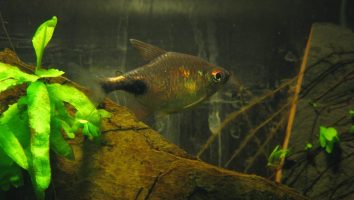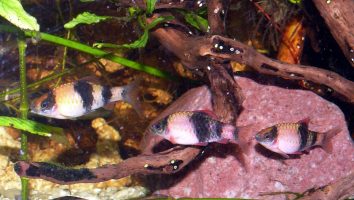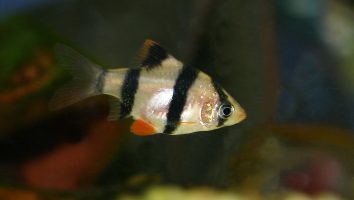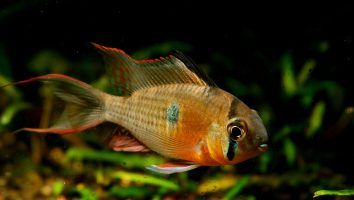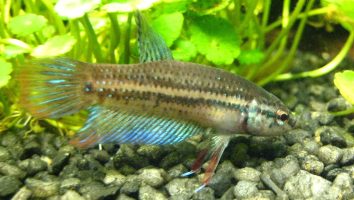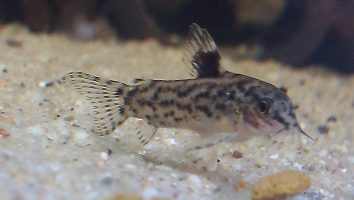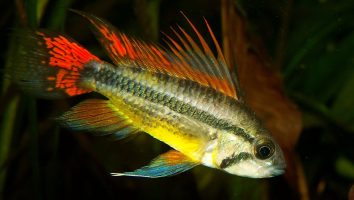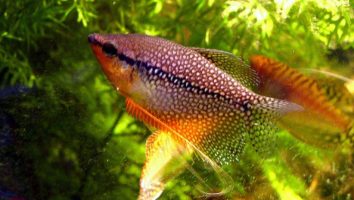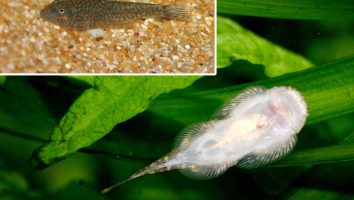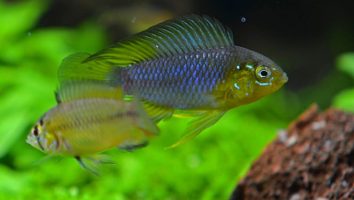The tic-tac-toe barb is a peaceful and unique freshwater fish that is perfect for beginners.
This species is very easy to care for and can be kept in a community tank with other peaceful fish.
They are also very active and love to explore their surroundings, so they make a great addition to any aquarium.
If you’re looking for a fun and easy to care for fish, the tic-tac-toe barb is a great option!
Table of contents
Species overview
The tic-tac-toe barb (Puntius tetrazona) is a freshwater fish that’s native to Southeast Asia. It’s found in countries like Thailand, Laos, Cambodia, and Vietnam.
This fish prefers to live in slow-moving water with a lot of plants and vegetation. This is something that’s common to many species of barb.
The tic-tac-toe barb is a very popular fish in the aquarium scene due to its unique coloration. It has a black body with three white stripes running vertically down it.
This fish is a very active swimmer and does best in a tank with plenty of open space. It’s also important to note that this fish is quite shy, so it’s best to keep them in a tank with other peaceful fish.
Appearance
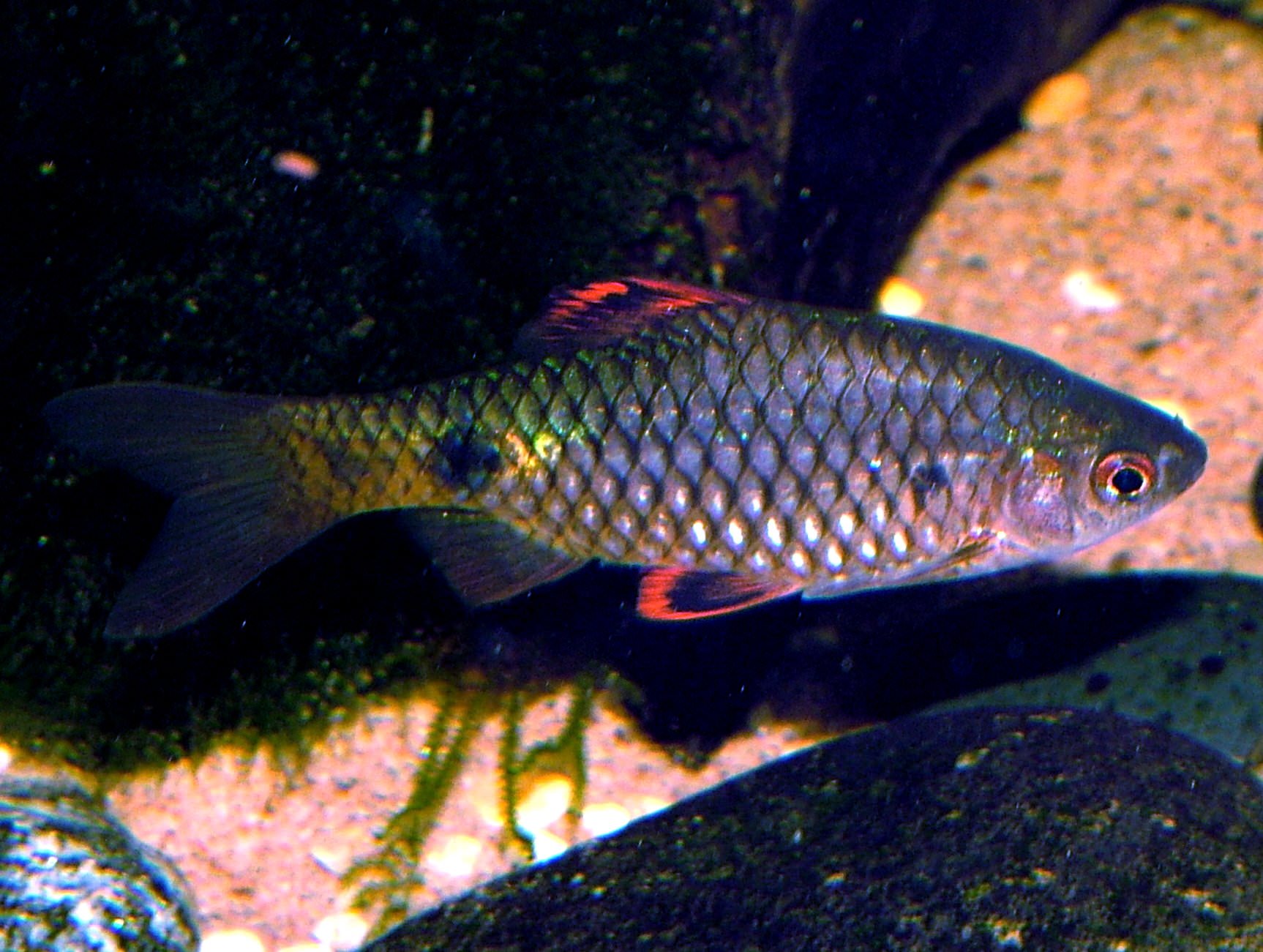
Tic-tac-toe barbs are a very striking fish due to their unique coloration. The front half of their bodies is a deep, rich black. This black fades into a bright white as you move down their sides.
The white section is then broken up by three vertical black stripes that run from the top to the bottom of the fish. These stripes create a tic-tac-toe like pattern (thus the name).
The fins on this fish are also black and white. The dorsal fin is tall and thin and starts about two-thirds of the way back on the body. The anal fin is a bit shorter and thinner and starts just behind the dorsal fin.
The caudal fin is forked and symmetrical. The pectoral fins are also black and white and are relatively small.
Tic-tac-toe barbs are a small fish, only growing to be about 2.5 inches (6.4 cm) long.
Lifespan
The lifespan of a tic-tac-toe barb is around 5 to 8 years. This relatively long lifespan is due to the fact that these fish are very hardy.
As with any other fish, the lifespan of a tic-tac-toe barb can be impacted by a number of factors. Poor water quality, stress, and a suboptimal diet can all lead to a shorter lifespan.
Size
Tic-tac-toe barbs reach a maximum size of around 2 inches. Most of the time, they’ll stay closer to 1.5 inches. These fish are on the smaller side, which is something to keep in mind when choosing tank mates.
Tank
Tank Size
The minimum tank size for Tic-tac-toe barbs is 10 gallons. If you’re looking for a nano fish that can fit in a small tank, this is a good option.
Keep in mind that these fish are very active and need plenty of space to swim. If you’re looking to keep a school of them, we recommend a 20 gallon tank as the minimum.
Water Parameters
The tic-tac-toe barb is a freshwater fish that is native to the Malay Peninsula, Thailand, and Indonesia. In the wild, they inhabit slow-moving rivers and streams with a sandy bottom and plenty of vegetation.
As with all fish, it’s important to replicate their natural habitat as closely as possible. That includes the water conditions. The tic-tac-toe barb is a tropical fish that prefers warm water with a slightly acidic pH.
They’re also a schooling fish, so it’s important to keep them in groups of at least six. A larger group is even better. This will help reduce stress and make them feel more comfortable in their environment.
Here are a few basic water parameters to help create a healthy tic-tac-toe barb environment.
- Water temperature: 72 to 82 degrees Fahrenheit
- pH levels: 6.5 to 7.5
- Water hardness: 4 to 18 dGH
- Alkalinity Levels: 4-8 dKH
What To Put In Their Tank
A lot of people think that because Tic-tac-toe barbs are small they don’t need much in their tank. This couldn’t be further from the truth.
In fact, these fish need a lot of hiding places and structures to feel comfortable in their aquarium.
The first thing you should do is add some plants. These don’t need to be live plants, but they should provide some good cover for your fish. We recommend something like Hornwort or Water Wisteria.
Next, you’ll want to add some rocks and driftwood to the tank. These can be arranged in a way that provides ample hiding places for your fish. Just be careful not to make the tank too cluttered.
Last but not least, you should include a substrate that’s soft and sandy. This will help reduce the risk of injury if your fish decide to dig around (which they’re known to do).
Common Diseases
The tic-tac-toe barb is a hardy and disease-resistant fish. They don’t often fall ill, and when they do it’s usually because of something that could have been prevented.
The most common disease that affects this species is bacterial infection. This can occur for a number of reasons, but the most common is poor water quality.
If you notice your fish scratching themselves a lot, or if they have red or inflamed skin, these are signs that something isn’t right.
Other diseases that can affect this species include parasites, fungal infections, and viral infections. These are less common, but they can still occur if the fish are kept in subpar conditions.
The best way to prevent your fish from getting sick is to provide them with a clean and stable environment. This means regular water changes, filters, and keeping an eye on the water parameters.
A healthy tank will lead to healthy fish, so it’s always worth taking the extra time to do things right.
Behavior & Temperament
The Tic-tac-toe barb is a peaceful fish that does best in a community tank. It is relatively shy, so it appreciates having plenty of hiding places.
This fish is a bottom-dweller and likes to spend its time sifting through the substrate for food. It is an active fish, but it is not a swimmer. It prefers to stay close to the bottom of the tank.
The Tic-tac-toe barb is a social fish and does best when it is kept in a group. It is not an aggressive fish, but it can be nippy. It is best to keep this fish with other peaceful fish that are of a similar size.
Tank Mates
The tic-tac-toe barb is a schooling fish. That means they do best when kept in groups of at least six.
This social behavior means they’re less likely to nip at the fins of other fish.
They’re also not as likely to become food since they’ll be in a large group.
The tic-tac-toe barb is a peaceful fish that gets along with most species. They’re not fin nippers and won’t bother other fish.
Some good tank mates for the tic-tac-toe barb include:
- Neon Tetra
- Cardinal Tetra
- Black Neon Tetra
- White Cloud Mountain Minnow
- Guppy
- Platy
- Molly
- Swordtail
Breeding
Tic-tac-toe barbs are easy to breed in captivity. All you need is a pair of adult fish and a spawning tank.
A spawning tank is a special tank set up for breeding fish. It’s usually smaller than a regular fish tank and has a few special features. For example, the water level is usually lower in a spawning tank. That’s because female fish lay their eggs in shallow water.
Some breeders also like to use a spawning mop in their tanks. This is a piece of cloth or wool that the fish can lay their eggs on. It’s an easy way to collect the eggs.
To set up a spawning tank, start with a 10-gallon tank. Fill it with water and add a few live plants. Java moss is a good option. It’s easy to find and it provides hiding places for the fry.
You can also use a piece of spawning mop. Just tie it to a rock or something else in the tank so it doesn’t float away.
Now, it’s time to add your fish. Start with a pair of adult tic-tac-toe barbs. These fish are easy to sex. Males have longer fins and brighter colors. Females are usually a little bit larger than males.
Once the fish are in the tank, they should start to breed on their own. If they don’t, you can try giving them a little bit of help. For example, you can raise the water temperature a few degrees. You can also add a little bit of aquarium salt to the water.
Either way, it shouldn’t take long for the fish to start breeding. The female will lay her eggs in the Java moss or on the spawning mop. The male will fertilize the eggs.
Once the eggs are fertilized, the parents will usually eat them. So, it’s a good idea to remove the adults from the tank after spawning.
The eggs will hatch in about 24 hours. The fry will be tiny, so you’ll need to feed them live food. Baby brine shrimp are a good option. You can also use microworms or daphnia.
Just be sure to feed the fry often. They need to eat several times a day to survive.
Conclusion
The Tic-tac-toe barb is a great fish for beginner aquarists. They’re easy to care for and don’t require much in the way of special care.
They’re also a lot of fun to watch, as they’re very active fish.
If you’re looking for a fish that’s easy to care for and is a lot of fun to watch, then we highly recommend the Tic-tac-toe barb!

